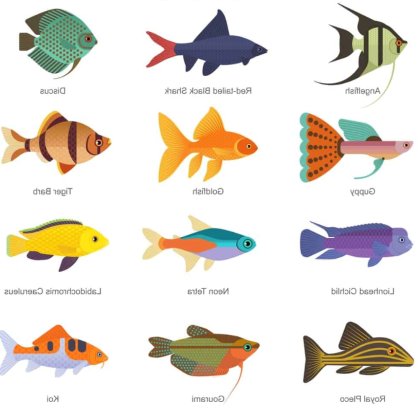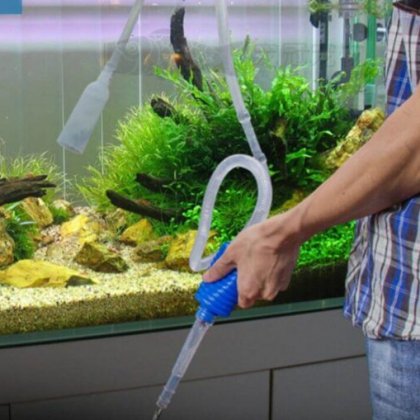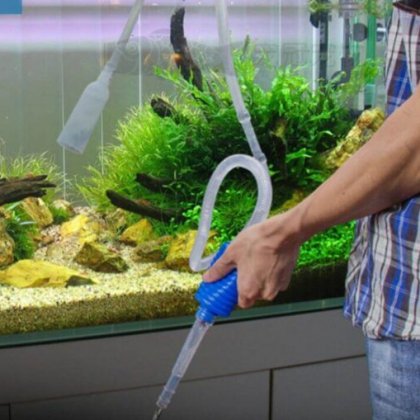Blue Gourami Aquarium Care, Feeding and Native Habitat Information
Blue Gourami are an attractive Southeast Asian community species that is widely available within the aquarium hobby trade. They have been a very popular species ever since their introduction into the hobby, due to a mix of attractive colors, interesting body shape, swimming habits and peaceful demeanor, Blue Gourami are at home in pretty much any tropical freshwater community aquarium. While always an attractive fish, their coloration and pattern can change based on their mood and their surroundings, at times being a deep blue with a well defined pattern all the way to a pale blue with a very faint color pattern. Like many fish species the Blue Gourami goes by multiple names including: Opaline Gourami and Three-Spot Gourami, for the two spots on their body and their eye being the third spot as it is lined up nicely with the other two. Blue Gouramis also possess a labyrinth organ, which allows them to breath air directly, which comes in handy in their natural environment as they often live in shallow water with low oxygen levels.
Blue Gourami are a very hardy species that is very tolerant of water temperature, pH, dissolved oxygen levels and KH. They prefer aquariums that have plenty of dense live plants with calm or moderate water currents. Blue Gourami will spend most of their time near the surface of the aquarium, but will seek cover in plants of near driftwood if they feel threatened. The males of the species are very territorial and should only be kept with multiple females; however, if the aquarium is very large (125 gallon plus) a group of 6 or more Gourami can be kept together and the combination of tank size and fish group size will reduce their natural territorial aggression.
Blue Goruamis are an exceptionally easy fish to feed, as they will accept virtually any meaty foods ranging from flake or freeze-dried, to live foods, such as bloodworms, brine shrimp or krill. They will also consume hydra voraciously, and are prized for their ability to eliminate this pest from the home aquarium.
Blue Gouramis tolerate a wide range of temperatures and are not demanding in terms of water conditions, but they prefer soft, slightly acidic water when in breeding season. Males have a long, pointed dorsal fin, while the females dorsal fin is shorter and more rounded. Because the male can be rather aggressive during spawning, the aquarium habitat should provide plenty of places for the female to take refuge, this is important as the female will need to seek refuge from an overanxious male in order to avoid fin damage and stress.
Just before the sperm are released, the pair may be observed quivering, which is a sure sign that spawning is near completion. The eggs are released immediately thereafter, and are fertilized by the time they reach the bubble nest created earlier by the male fish. The pair may repeat the process a number of times over the course of several hours. It is not unusual for the number of eggs produced to reach into the thousands.
Once spawning is complete, the female's involvement is over, and she should be removed to prevent her from being attacked by the male. From this point forward until they hatch, the male will tend the eggs, carefully rearranging them and returning any errant eggs back to the nest. The eggs hatch in approximately 30 hours. The fry should be moved to a grow out tank with a sponge covered bubble filter, so that the young fish are not sucked into the filtration and killed. It is important that the fry be fed small foodstuffs, such as baby brine shrimp, infusoria or nauplii. The aquarium housing the fry should have frequent water changes during their growth as the water can become fouled quickly.
No reviews found!





















No comments found for this product. Be the first to comment!